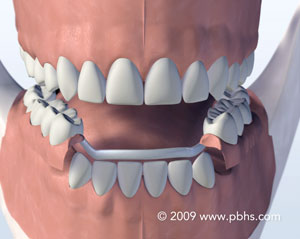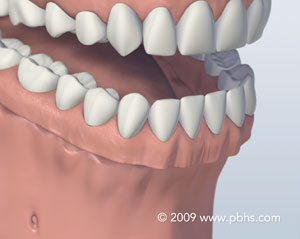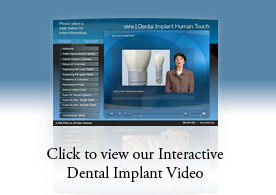2975 Westchester Ave,
Suite G02
Purchase, NY 10577
(914) 902-5780
1177 Summer Street,
4th Floor
Stamford, CT 06905
(203) 614-8355
- Home
- Locations
- Westchester
- Southern Connecticut
- Patient Info
- Introduction
- Patient Testimonials
- First Visit
- Scheduling
- Financial Policy
- Insurance
- Privacy Policy
- Emergencies
- Technology
- Surgical Instructions
- Before Anesthesia
- After Dental Implant Surgery
- After Extractions & Wisdom Teeth Removal
- After Exposure of Impacted Teeth
- After Sinus Lift Procedure
- After Bone Grafting
- Implant FAQ's
- Procedures
- Dental Implants
- About Implants
- Replacing Missing Teeth
- Overview of Implant Placement
- Missing All Upper or Lower Teeth
- Bone Grafting for Dental Implants
- Bar Attachment Denture
- TEETH-IN-AN-HOUR™
- After Implant Placement
- Cost of Dental Implants
- Bone Grafting
- Bone Grafting
- Jaw Bone Health
- About Bone Grafting
- Ridge Augmentation
- Sinus Lift
- Wisdom Teeth
- Wisdom Teeth
- Impacted Canines
- Impacted Canines
- Orthodontic Anchorage Devices
- Orthodontic Anchorage Devices
- Apicoectomy
- Apicoectomy
- Sinus Lift Surgery
- Sinus Lift Surgery
- Facial Trauma
- Facial Trauma
- Oral Pathology
- Oral Pathology
- Bone Morphogenic Protein
- Bone Morphogenic Protein
- Facial Cosmetics
- Facial Cosmetics
- Meet Us
- Meet Dr. Graffeo
- Meet Dr. Linsky
- Office Tour
- Ask the Experts
- Westchester Magazine
- Top Dentists
- Registration
- Referring Doctors
- Referral Form
- Links of Interest
- Articles of Interest
- Sharefile
- Newsletters
- Pay Online
- Contact
- Contact Us
- Request Appointment
Replacing Missing Teeth
Your teeth affect your whole body. When they’re healthy, you’re healthier too. A missing tooth can affect your bite, speech and eating choices.
Why is it important to replace missing teeth?
As you rely more on your remaining teeth, you increase the chance they will wear out prematurely, or be damaged or lost. You may also experience headaches and/or jaw pain. Who would want their appearance and health to deteriorate? That’s the natural consequence of missing teeth – the jaw literally melts away.
Generally, people will lose 25% of their supporting jawbone structure within the first year after tooth loss. Dental implants are more easily placed when teeth are first extracted because bone replacement becomes more complex as time passes. The great news? Implants act just like your natural teeth. They safeguard and preserve your bone structure, oral health and appearance. Your dentist and the implant surgeon will provide you with options so that you can make the most informed decision concerning tooth replacement.
Tooth Replacement Options
You can select from a number of different options to replace your missing teeth – from temporary to long-lasting solutions.
A good candidate is anyone missing one or more teeth, or who is unhappy with their dentures. Age is not a factor. However, smoking, diseases such as diabetes, and radiation therapy to the area, have been shown to lower the success rate of implant placement. X-rays of your jaw will be taken to evaluate whether they will accommodate implants. Detailed x-rays may also be required to determine if other tests or procedures are needed to place implants properly.

Fixed Bridge
A fixed bridge is a connected set of replacement teeth. For support, it is cemented into position on top of the teeth adjacent to the empty space. The protective outer layer of these teeth is usually removed or ground down prior to attaching the bridge.

Flipper
A fragile, temporary and inexpensive solution is a removable plastic tooth with a plastic retainer, often called a “flipper”.

Metal Partial
A less fragile option is a removable partial denture cast in metal and plastic. It is held in place by wire clips. A removable partial denture can be removed and reinserted when required by the patient.

Denture
The most common solution, for people missing all teeth in one or both jaws are complete dentures. Some people adapt well to dentures. Others find them uncomfortable, even intolerable, because of differences in jaw size and shape.

Dental Implants
Dental implants are the most comfortable and permanent solution. They form a strong foundation for teeth and keep the jaw healthy and strong. Implants support individual replacement teeth or secure specialized dentures in place. Unlike bridges, no healthy teeth are damaged. Unlike most bridges, implants can last a lifetime. Implant-supported replacement teeth can be attractive, stable, and comfortable for almost any patient.
Dental Implant Presentation
To provide you with a better understanding of dental implants, we have provided the following multimedia presentation. Many common questions pertaining to dental implants are discussed.
Having trouble? Please make sure you have the Adobe Flash Player plugin installed in order to correctly view this presentation. This software is available as a free download.
Why Select Dental Implants Over More Traditional Types Of Restorations?
There are several reasons: A dental bridge can sacrifice the structure of surrounding good teeth to bridge the space of the missing tooth/teeth. In addition, removing a denture or a “partial” at night may be inconvenient, not to mention dentures that slip can be uncomfortable and rather embarrassing.
What Are Dental Implants?
A natural tooth consists of a root and a crown. If you compare natural teeth to implant-supported replacement teeth, you’ll see they have the same basic parts. Both have a crown (the visible part used to chew food). Both have a root that holds the tooth securely under the gum and is anchored into the jaw. The difference is that the implant is made of titanium – the same time-tested material used by surgeons for artificial joints. When you lose a tooth, you lose both the root and the crown. To replace the tooth, the surgeon first replaces the root with a small dental implant.
Time is allowed for bone to heal and grow around the dental implant. The bone bonds with the titanium, creating a strong foundation for artificial teeth. A support post (abutment) is then placed on the implant and a new replacement tooth (crown) is placed on top of the abutment. In many cases a temporary replacement tooth can be attached to the implant immediately after it is placed. If all of your teeth are missing, a variety of treatment options are available to support the replacement teeth.

“Don’t be afraid to Smile.”
For years I’d felt like a part of my body was missing — because my teeth were. My dentist told me that dental implants would make me feel and look a lot better. OK, I said. Now, I’m thrilled. I can smile, eat anything, and enjoy a good laugh with my friends.
Surgical Advances
Using the most recent advances in dental implant technology, Dr. Graffeo and Dr. Linsky are able to place single stage implants. These implants do not require a second procedure to uncover them, but do require a minimum of six weeks of healing time before artificial teeth are placed. There are even situations where the implant can be placed at the same time as the tooth extraction – further minimizing your number of surgical procedures.
Dental implant placement is a team effort between an oral and maxillofacial surgeon and a restorative dentist. Dr. Graffeo and Dr. Linsky perform the actual implant surgery, initial tooth extractions, and bone grafting if necessary. The restorative dentist (your dentist) fits and makes the permanent prosthesis. Your dentist will also make any temporary prosthesis needed during the implant process.
Our Locations
Please call our practice to schedule your consultation or click here to email us.

- 2975 Westchester Ave
- Suite G02
- Purchase, NY 10577
- (914) 902-5780
- 1177 Summer Street
- 4th Floor
- Stamford, CT 06905
- (203) 614-8355
© Westchester Oral & Maxillofacial Surgery & Implantology. All Rights Reserved. | Accessibility Policy | Privacy Policy
Last Updated: August 1st, 2024 05:46 PM


